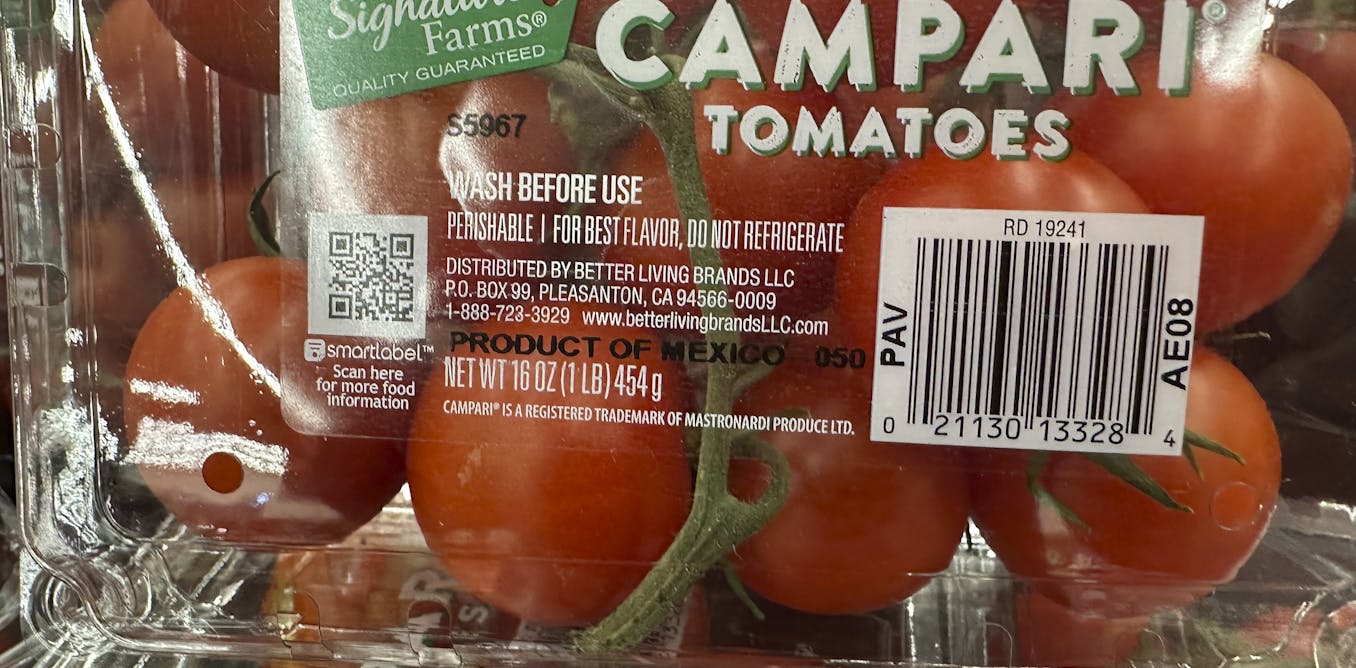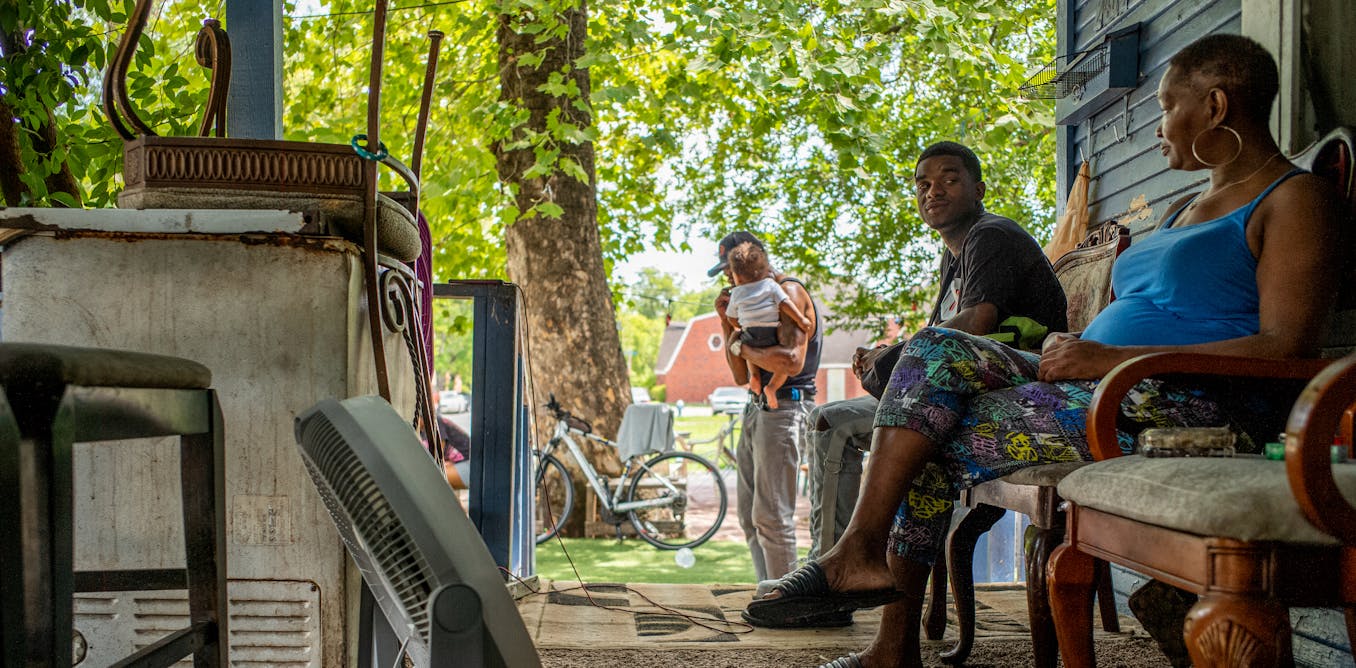The U.S. operates one of the largest and most punitive criminal justice systems in the world. On any given day, 1.9 million people are incarcerated in more than 6,000 federal, state and local facilities. Another 3.7 million remain under what scholars call “correctional control” through probation or parole supervision.
That means one out of every 60 Americans is entangled in the system — one of the highest rates globally.
Yet despite its vast reach, the criminal justice system often fails at its most basic goal: preventing people from being rearrested, reconvicted or reincarcerated. Criminal justice experts call this “recidivism.” About 68% of people who leave prison in any given year are rearrested within three years, according to the Bureau of Justice Statistics.
It’s certainly easy to blame individuals for getting rearrested or reincarcerated. But if you take a closer look at life after release – which often includes employment discrimination, housing barriers and exclusion from basic social services – recidivism seems less like a personal failure, I would argue, and more the workings of a broken system.
As a sociologist, I know that people are rarely given a “second chance” after conviction. Instead, they must navigate a web of legally imposed restrictions. Roughly 19 million people in the U.S. have a felony record, subjecting them to thousands of “collateral consequences,” in the words of the U.S. Commission on Civil Rights. These restrictions dictate everything from what jobs they can take to where they can live.
I’ve recently undertaken research to understand the scale of this issue, aided by my former undergraduate student Skylar Hathorn, who is set to begin a master’s degree in the fall. What we found was sobering. As sociologist Reuben Miller and historian Amanda Alexander have put it, people convicted of felonies are transformed into “carceral citizens.”
Why probation and parole are part of the problem
Probation is community supervision, typically imposed by courts as an alternative to incarceration, and parole is a type of prison release under community supervision. While community supervision was originally designed to help those convicted of crimes reintegrate into society – through mentorship, supportive services and other resources – today, in my view, it largely functions as a punitive surveillance system.
Instead of helping people reintegrate, the system enforces rules – such as forbidding contact with friends or family members who have criminal records – which create new challenges for people trying to rebuild their lives after prison. As one individual from my recent study on reentry put it, “That shit ain’t helping nobody.”
On average, people under community supervision must comply with 10 to 20 conditions, such as mandatory drug tests, regular check-ins with supervising officers, or curfews. These requirements are typically set at the state, county or city level, and can be supplemented with “discretionary” or “special” conditions imposed by court or parole officials.
But while community supervision is supposed to encourage reintegration and personal responsibility, its conditions are often unrealistic, creating hidden traps rather than pathways to success.
For example, imagine you’re lucky enough to find a decent job despite having a criminal record – but your probation officer schedules weekly meetings during your work hours. Do you skip work and risk losing your job? Or miss the meeting and risk a violation? Research shows that this dilemma is common. In one study of almost 4,000 people on probation, 55% missed at least one meeting with their parole officer, increasing their risk of reincarceration.
What if you aren’t able to find a job or can’t afford to pay the supervision fees charged each month? Does contact with a family member who happens to have a criminal record defy a condition of your supervision? Will a speeding ticket land you in jail, since you aren’t supposed to have any contact with law enforcement? What happens if you struggle with addiction and fail a drug test? Or what if you forget to charge your electronic ankle monitor — will your parole officer suspect foul play?
Depending on the conditions of your release, all of these seemingly minor snags could land you back behind bars. That’s why some scholars describe this system as a “parole- and probation-to-prison pipeline.” According to recent estimates, 35% to 40% of yearly prison admissions are of people who were on community supervision at their time of rearrest. In some states, over half of all prison entries are of people on either parole or probation.
State-level success stories – and failures
Importantly, if you’re on probation or parole, your chances of being sent back to prison are very different depending on where you live. You can see just how different by visiting the Justice Outcomes Explorer, a new data dashboard created by the Criminal Justice Administrative Records System. For example, among Idahoans who began a term of probation in 2018, roughly 16.6% were sent to prison within a year. Among Minnesotans, it was just 1.6%.
According to the Justice Outcomes Explorer, parole outcomes are even worse, though yet again they vary by state. Among those released on parole in 2018 from Utah prisons, roughly 51.6% were reincarcerated within a year. In California, that number was less than 7%. Although some variation may come from differences in data collection, much of it reflects policy choices.
As sociologist Michelle Phelps explains, supervision may act as “an off-ramp for some and a conveyor belt toward prison for others.”
Part of the problem is that probation and parole offices vary considerably. For instance, some states cap how long someone may remain on parole, while others allow parole boards to extend that time indefinitely. This creates a system where, in effect, parole boards operate as resentencing entities. Differences in supervision fees, restrictions on associating with others, and the use of electronic monitoring also vary by state.
Research suggests that Americans under community supervision must comply with many more conditions than they did just a few decades ago, which raises the question: Does any of this work?
While some studies suggest that contemporary forms of supervision may reduce reincarceration, recent analyses call this into question.
For example, one study compared people who were randomly placed under intensive probation supervision — requiring more office check-ins, home visits and drug tests — with those under traditional supervision. Researchers found that while both groups committed new crimes at the same rate, those under intensive supervision received technical violations – such as failing a drug test or not following curfew – more often, and were incarcerated more.
In another rigorous study out of Kansas, using what researchers call a “natural experiment,” legal scholar Ryan Sakoda found that post-release supervision significantly increased reincarceration rates. This suggests that community supervision keeps people trapped in the system, rather than helping them escape it.
In fact, according to estimates from the Council of State Governments, almost one-quarter of all prison admissions are due to technical violations of supervision, not new crimes. And even progressive states can enforce technical rules rigidly. For instance, Massachusetts sends a relatively small number of people back to prison or jail while they are on parole. But after retrieving data from a public records request, Skylar and I found that between 2020 and 2022, roughly 80% of all parole revocations were due to technical violations.
That said, the overall number of people admitted to U.S. prisons for technical violations has fallen significantly over the past few years. In 2018, roughly 133,000 people were admitted to prison for technical violations. By 2021, that number was around 89,000 – a decrease of about 33%.
Rethinking community supervision
Historically, community supervision wasn’t intended to be a form of punishment — it’s supposed to help individuals reintegrate. But that’s not the way it currently works. If states are serious about reducing crime, they should think about reinventing the system.
In 2021, New York implemented the “Less is More” Community Supervision and Revocation Reform Act, which reformed parole and reduced incarceration for technical violations. The act limits jail time for such violations to 30 days, allows early parole release and requires court hearings within 30 days. Within the first month of being enacted, the number of technical parole violators had fallen by 40%. By April 2022, technical violators only made up 1.7% of the daily state jail population. They had previously made up about 5% on average.
Along with policies that prevent criminalization in the first place, states that want to prevent recidivism could consider dedicating more resources to programs that help people with life after release. Offering supports such as housing and even direct cash assistance would help people reintegrate into society and create safer communities, research indicates.
On a similar note, criminal records limit access to a range of resources and opportunities such as housing, higher education, voting and social benefits like basic food assistance.
Simply having a criminal record also reduces the likelihood – by roughly 60% – that someone receives a callback after applying for a job. That’s why Skylar and I support automatic criminal record expungement, among other structural reforms.
Put plainly: Research points toward a system in need of comprehensive solutions. Without them, many will remain in the incarceration trap.
Skylar Hathorn, a recent graduate of Suffolk University and master’s student starting in September 2025, contributed to this article.




